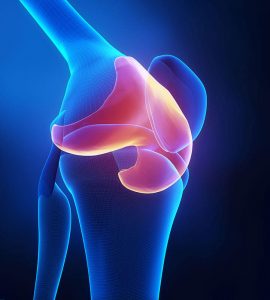Preventing knee injuries is challenging, especially for physically active individuals. Whether you are involved in sports, exercise or physically demanding activities, the risk of injury to the knee ligaments is always present.
One of the most commonly injured ligaments is the medial collateral ligament (MCL). Understanding the causes, recognising the symptoms, and knowing the different grades of injury are crucial in addressing this condition.
Anatomy
Before we dive into what MCL injury is, let us first understand the medial collateral ligament (MCL).
What is the MCL (Medial Collateral Ligament)?
The medial collateral ligament, commonly known as the MCL, is a thick and strong ligament located on the inner side of the knee joint. It extends from the end of the femur (thigh bone) to the top of the tibia (shin bone). The MCL helps to stabilise the knee joint, keeping the knee from moving side to side.
What Is an MCL Injury?
An MCL injury is a sprain or tear of the MCL. It typically results from a direct blow to the outer knee, sudden twisting movements, or excessive stress on the inner knee, which causes it to bend inward toward the other knee. This damage requires immediate medical attention for proper diagnosis and treatment. Notably, an MCL injury can occur independently or concurrently with an anterior cruciate ligament (ACL) injury.
What Are the Grades of an MCL Injury?
MCL injuries are classified into three grades, based on the severity of the ligament damage.
- Grade 1 MCL Tear: The least severe damage that only involves a mild sprain. It means the ligament is stretched but not torn.
- Grade 2 MCL Tear: The ligament has been partially torn. The MCL is loose, causing some instability in the knee joint.
- Grade 3 MCL Tear: The most severe type of ligament injury. It occurs when the ligament has been completely torn.
What Are the Common Symptoms of an MCL Injury?
The symptoms of an MCL injury can vary depending on its grade. Common symptoms include:
- A “popping” sound or sensation in the knee upon injury
- Pain and tenderness on the inner part of the knee, which vary from mild to severe, depending on the injury grade
- Bruising and discolouration around the injured area, particularly in more severe cases
- Swelling of the knee joint
- Knee instability or feeling of weakness or giving out
What Are the Risk Factors for MCL Injuries?
Several factors can increase the risk of an MCL injury, including:
- High-Contact Sports: Activities like football, rugby, and hockey expose the knee to direct lateral impacts, a primary cause of MCL tears.
- Pivoting and Twisting Sports: Sports such as basketball, skiing, and tennis, which demand rapid directional changes, increase the risk of rotational knee injuries.
- Unstable Landings: Awkward landings following jumps can place excessive stress on the knee, potentially damaging the MCL.
- Prior Knee Injuries: A history of MCL, anterior cruciate ligament (ACL), or other knee ligament injuries can compromise knee stability, making it more susceptible to subsequent damage.
- Improper Footwear: Shoes lacking proper support can increase the likelihood of knee instability and injury.
- Excess Body Weight: Obesity places additional stress on the knee joint, predisposing individuals to ligament injuries.
How Are MCL Injuries Diagnosed?
Diagnosing an MCL injury involves a combination of an assessment of the patient’s medical history, physical examination, and imaging tests.
- Medical History: The doctor will ask questions about the injury including how it occurred, the symptoms experienced, and any previous knee injuries.
- Physical Examination: The doctor will examine the knee to check for tenderness, swelling, and bruising along the MCL.
- Imaging Tests: Although not always necessary, imaging studies like X-rays or MRIs are utilised to exclude more severe injuries, such as fractures or other tears, especially when clinical findings suggest their possibility.
What Are the Treatments for MCL Injuries?
Treatment options for an MCL injury can vary depending on how severe the injury is.
Non-surgical Treatment
For mild to moderate MCL injuries (Grades 1 and 2), non-surgical approaches are typically preferred. These conservative treatments aim to promote healing and restore knee function:
- Rest: Limiting weight-bearing and avoiding activities that exacerbate pain is essential for initial healing.
- Cryotherapy: Applying ice packs for 15-20 minutes at a time, several times daily, helps reduce inflammation and swelling.
- Compression: Using an elastic bandage or knee brace provides support and minimises swelling.
- Elevation: Raising the injured leg above the heart level reduces swelling by facilitating fluid drainage.
- Medications: Over-the-counter NSAIDs can alleviate pain and reduce inflammation.
- Assistive Devices: Crutches can be used to minimise weight-bearing and promote healing.
- Rehabilitation: Physiotherapy plays a crucial role in restoring knee strength, stability, and range of motion.
Surgical Treatment
Surgical intervention for MCL injuries is typically reserved for complete tears (Grade 3) or complex cases, particularly in athletes who require optimal knee stability for high-demand activities.
Surgical options include MCL repair, ideally performed within six weeks of the injury for better outcomes, or MCL reconstruction, which involves grafting tissue from the patient or a donor to create a new ligament. The choice between repair and reconstruction, as well as the type of graft used, depends on the severity of the injury, the patient’s activity level, and the surgeon’s expertise.
How Are MCL Injuries Prevented?
While complete prevention of MCL injuries is not always possible, certain precautions can significantly reduce the risk of sprains and tears. These preventive measures include:
- Pre-Activity Preparation: Thoroughly warm up and stretch before engaging in physical activity to enhance muscle and ligament flexibility and readiness.
- Targeted Strengthening: Implement exercises that strengthen the muscles surrounding the knee, promoting stability and reducing stress on the MCL.
- Protective Equipment: Athletes participating in high-contact or high-risk sports, or those with a history of knee injuries, should consider wearing supportive knee braces.
- Appropriate Footwear: Select shoes that provide adequate support and stability for the specific activity being performed.
- Proper Technique: Master and consistently apply correct sports techniques for running, jumping, landing, and pivoting to minimize unnecessary strain on the knee.
- Body Awareness and Rest: Pay attention to your body’s signals and incorporate rest days, particularly when experiencing knee pain or discomfort, to prevent overuse injuries.
FAQs About MCL Injuries
How common are MCL tears?
MCL tears are one of the most common knee ligament injuries. They are especially common among athletes who engage in sports that involve contact, twisting, and sudden changes in direction.
Can you still walk with a torn MCL?
In most cases, patients can still walk with a torn MCL. However, it will likely be difficult and painful due to significant knee instability. They are required to use support such as crutches or a brace.
Can an MCL tear heal on its own?
Minor MCL injuries can heal on their own. However, more severe tears necessitate a combination of adequate rest and a carefully structured rehabilitation programme to ensure complete recovery and restore knee stability.
Key Takeaway
MCL injuries are the second most common knee ligament injuries after ACL tears. The MCL is frequently injured due to direct impact to the outer knee, sudden twisting motions, or excessive stress on the inner knee. It is especially vulnerable in contact sports like football, basketball, and hockey.
If you suspect an MCL injury, prompt evaluation by an orthopaedic knee specialist is crucial for accurate diagnosis and personalised treatment. Call us today at +65 8028 4572 for a thorough assessment and to determine the most effective course of action for optimal recovery.

MMed (Orth), FRCS Orth & Tr (Edin)
Dr James Tan is a trusted orthopaedic surgeon in Singapore with over 10 years of experience in sports surgery and exercise medicine. He has treated athletes from Singapore’s national teams and professional football leagues. A specialist in knee, shoulder, and elbow injuries, Dr Tan is also skilled in minimally invasive tendon and ligament repair, cartilage and meniscus surgery, and joint replacement. He is a founding member of the Singapore Shoulder and Elbow Surgery Society and a fellow of the Royal College of Surgeons (Edinburgh). Committed to research and education, Dr Tan leads various research projects and serves as Adjunct Assistant Professor at both NUS and NTU medical schools.




